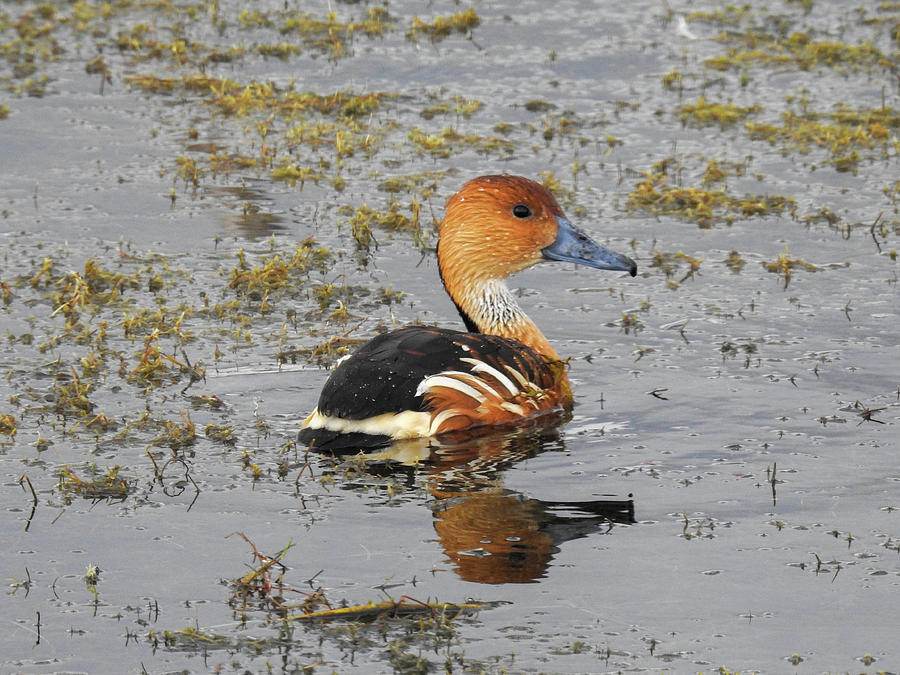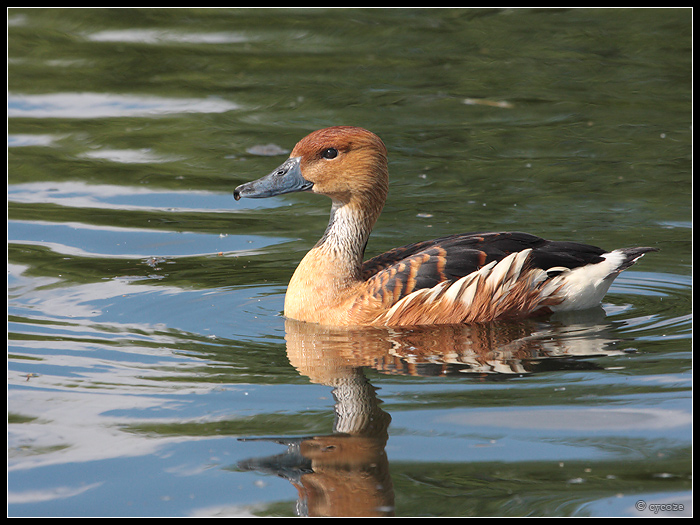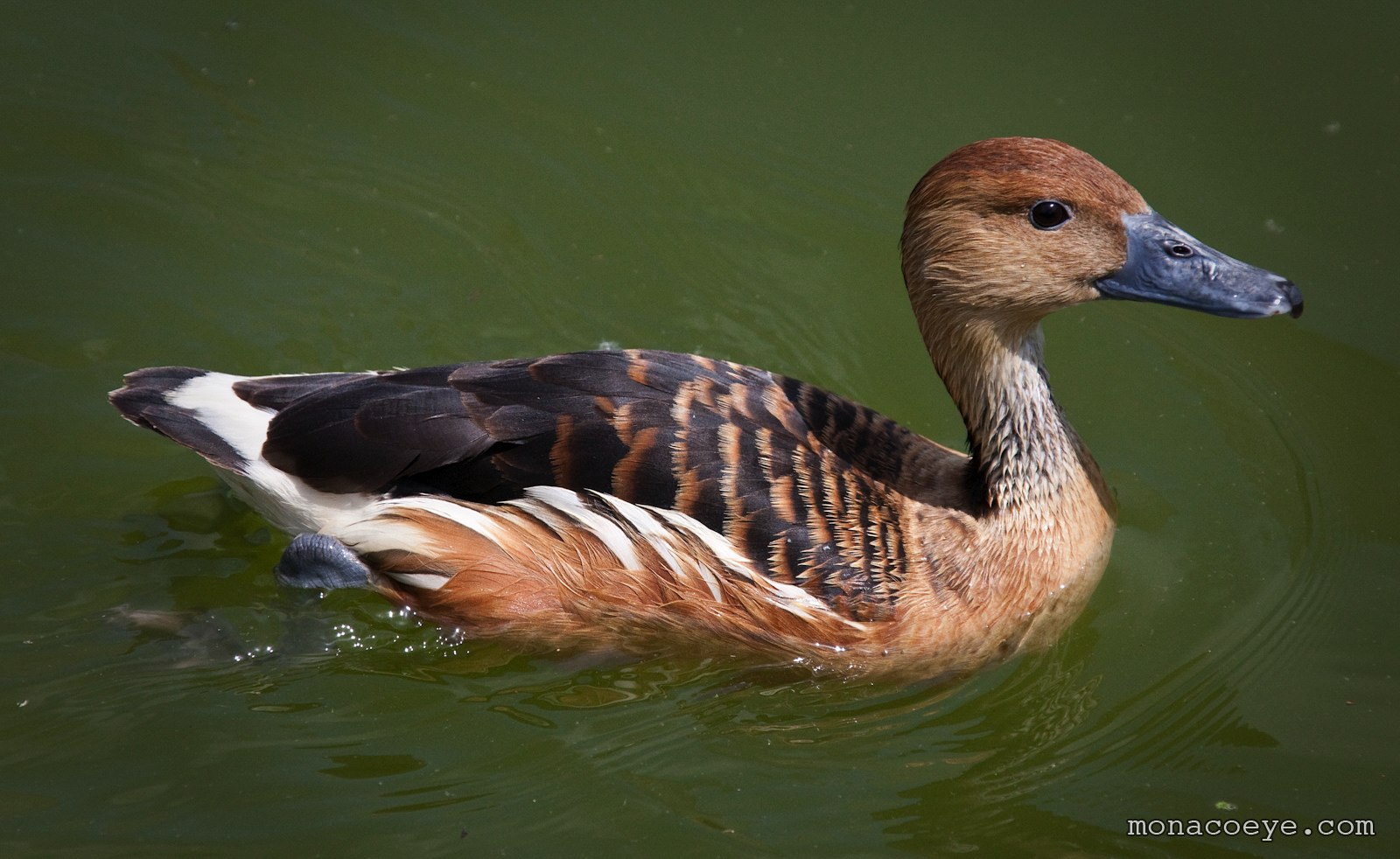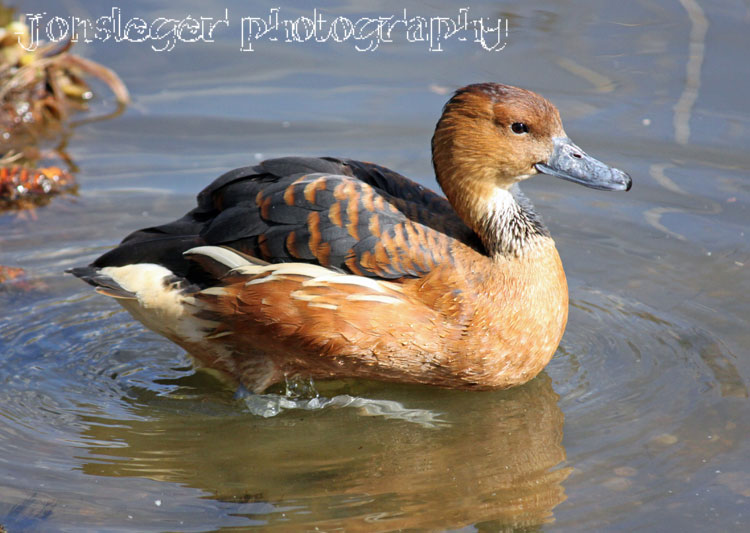
Fulvous Whistling Duck Habitat
Adult fulvous whistling-ducks of both sexes have a rufous-brown crown and upper nape, which becomes blackish down the center of the hindneck. The sides of the head, neck, chest and belly are a rich rufous-buff, with the sides of the neck paler, almost whitish, with fine dark striations. The back is dark brown with chestnut feather fringes, and.

Fulvous Tree Duck (Dendrocygna bicolor) The Fulvous Whistl… Flickr
The fulvous whistling duck or fulvous tree duck (Dendrocygna bicolor) is a species of whistling duck that breeds across the world's tropical regions in much of Mexico and South America, the West Indies, the southern United States, sub-Saharan Africa and the Indian subcontinent. It has plumage that is mainly reddish brown, long legs and a long grey bill, and shows a distinctive white band.

Silver Fulvous Tree Duck pair
Fulvous whistling ducks are a bit smaller than the black-bellied, but weigh about the same. The fulvous makes a high-pitched two-note call, similar to a wood duck's pre-dawn squeal.

Fulvous tree duck stock image. Image of nature, floating 22839209
12-14, sometimes 6-16. Whitish, becoming nest-stained. Females may lay eggs in each others' nests (or nests of other species); such "dump nests" can contain 60+ eggs. Incubation by both sexes, 24-26 days. May leave eggs unattended for hours on warm days until close to hatching time. Young: can swim and dive well.

Fulvous Tree Duck in the Florida Wetlands Photograph by Lisa Crawford
The fulvous whistling duck is 45-53 cm (18-21 in) long; the male weighs 748-1,050 g (26.4-37.Zero oz), and the feminine averages marginally lighter at 712-1,000 g (25.1-35.3 oz). The wingspan ranges from 85 to 93 cm. It is a long-legged duck, primarily totally different shades of brown; head, neck, and breast are significantly.

Fulvous Tree Duck by cycoze on DeviantArt
Whistling-ducks are a distinctive group of about 8 species of brightly colored, oddly proportioned waterfowl. The Fulvous Whistling-Duck is a mix of rich caramel-brown and black, a long-legged and long-necked creature found in warm freshwater marshes across the Americas, Africa, and Asia. In the United States they are rarely found far from rice fields, which provide both food and an optimal.

The fulvous whistling duck or fulvous tree duck (Dendrocyg… Flickr
The fulvous whistling duck or fulvous tree duck (Dendrocygna bicolor) is a species of whistling duck that breeds across the world's tropical regions in much of Mexico and South America, the West Indies, the southern United States, sub-Saharan Africa and the Indian subcontinent.It has plumage that is mainly reddish brown, long legs and a long grey bill, and shows a distinctive white band across.

Fulvous Tree Duck ZooChat
Whistling-ducks are a distinctive group of about 8 species of brightly colored, oddly proportioned waterfowl. The Fulvous Whistling-Duck is a mix of rich caramel-brown and black, a long-legged and long-necked creature found in warm freshwater marshes across the Americas, Africa, and Asia. In the United States they are rarely found far from rice fields, which provide both food and an optimal.

Duck (Fulvous Tree) Dudley Zoological Gardens
The Fulvous Tree Duck (Dendrocygna bicolor) — more frequently known as the Fulvous Whistling Duck — is a medium-sized, caramel-brown and black, long-necked and long-legged duck. In the United States, they are found in and around rice fields, crayfish farms and flooded pastures in Florida, Texas and Louisiana..

Fulvous Whistling Duck
Rich caramel-colored duck with long neck and legs. Look for blue-gray legs and bill and white stripes on sides. Easily distinguished from Black-bellied Whistling-Duck in flight because Fulvous has all-dark wings. Usually found in flocks in marshes, marshy ponds, and flooded rice fields. Active day and night. Frequently gives whistled calls. Males sound wheezier, females more nasal and squeaky.

fulvous tree duck 10 mile creek Patti Ireland Flickr
The fulvous tree duck is more easily approached than many other waterfowl, but nevertheless is often difficult to find as it congregates among the dense tules or far out on the marshy ponds. On occasion a flock has been easily approached and. a number killed at one shot. Sometimes, when tree ducks are surprised on grassy ground, they simply.

Fulvous WhistlingDuck Audubon Field Guide
Fulvous Whistling-Ducks spread north into the state in the late 1800s and were nesting there at least by the 1890s. During the first half of the twentieth century, they were widespread in the southern half of the state, both in the interior valleys and along the coast, as far north as San Francisco Bay. Then they started declining.

Northern Illinois Birder Fulvous Whistling or Tree Duck and Blackbellied Tree Duck
Fulvous Whistling-Ducks, formerly known as Fulvous Tree Ducks, are among the most widespread waterfowl in the world, found throughout tropical and subtropical areas of Africa, Asia and the Americas, especially in rice-growing regions. These birds consume a diet rich in moist-soil and aquatic plant seeds; such as rice seeds and aquatic.

Fulvous tree duck (Dendrocygna bicolor) ZooChat
Whistling-ducks are a distinctive group of about 8 species of brightly colored, oddly proportioned waterfowl. The Fulvous Whistling-Duck is a mix of rich caramel-brown and black, a long-legged and long-necked creature found in warm freshwater marshes across the Americas, Africa, and Asia. In the United States they are rarely found far from rice fields, which provide both food and an optimal.

Bird of the Day The Fulvous and BlackBellied Tree Ducks
The Fulvous Whistling Duck, also known as the Tree Duck, is the most commonly seen member of its genus in captivity. They are found on four continents: North and South America, Africa and Asia, yet there are no known subspecies. They often form very large groups, sometimes with other whistling duck species where ranges overlap.

Fulvous Tree Duck pair
Other articles where fulvous tree duck is discussed: whistling duck:.of the tribe is the fulvous tree duck (Dendrocygna bicolor), with isolated populations in North and South America, India, and Africa—a most unusual world distribution and, remarkably, without geographic variation. It is mallard-sized, with a rusty brown body, a white rump, and creamy stripes on the flanks.